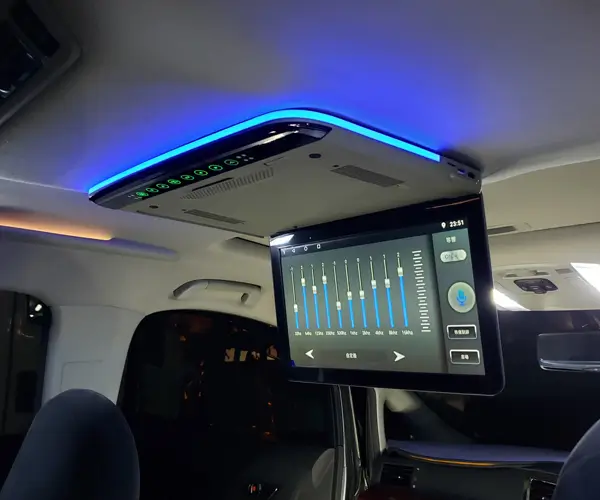Sure! Here's the first part of your soft article on "Servo Motor in IoT." I'll ensure it's engaging and informative, setting a compelling tone for the reader. Let's begin with Part 1.

part 1:
In the rapidly evolving world of technology, few innovations have captured the imagination quite like the Internet of Things (IoT). From smart homes and autonomous vehicles to industrial automation and healthcare devices, IoT is reshaping our environment in ways once thought impossible. Among the many components that make these intelligent systems function seamlessly, servo motors stand out as silent but powerful enablers of precision, control, and adaptability.
What Are Servo Motors?
At their core, servo motors are a class of high-precision actuators designed to provide accurate angular or linear positioning. Unlike simple motors that just spin, servo motors are equipped with feedback mechanisms—often encoders—that continuously inform the control system about their position, speed, and torque. This real-time feedback loop allows servo motors to execute intricate movements with exceptional accuracy.
Imagine a tiny robotic arm performing delicate surgical procedures or a drone adjusting its camera angle amidst turbulent winds. These feats are made possible by servo motors that respond swiftly and precisely to control signals. Their ability to maintain position and manage dynamic loads makes them ideal for tasks requiring fine-tuned movements.
The Role of Servo Motors in IoT Ecosystems
In the context of IoT, servo motors serve as vital bridges between digital commands and physical actions. They empower connected devices to perform autonomous, real-world functions—whether it’s adjusting the thermostat in a smart home, controlling robotic arms in manufacturing, or fine-tuning the positioning of sensors and cameras.
Consider smart agriculture systems: servo motors drive adjustable sprinklers, enabling precise water distribution based on real-time data analytics. In healthcare, robotic-assisted surgeries rely heavily on servo-driven mechanisms for accuracy and safety. Even in consumer electronics, automated camera gimbals use servo motors to produce ultra-smooth footage. The common thread is their ability to interpret digital signals into meaningful, precision movements.
Why Are Servo Motors Critical for IoT?
The success of IoT devices hinges on their ability to interact effectively with the physical environment. Servo motors, with their rapid response times and accurate control, are indispensable in this regard. They enable devices to perform complex, repetitive, or delicate tasks that would otherwise require manual intervention or less reliable systems.
Furthermore, advancements in servo motor technology—like the integration of smart sensors, energy-efficient designs, and wireless communication modules—have made them more adaptable and easier to embed into IoT frameworks. These innovations facilitate remote monitoring, predictive maintenance, and adaptive control strategies, ensuring systems stay reliable and efficient over time.
Combining Servo Motors with IoT: The Perfect Symbiosis
In essence, IoT is about connectivity—connecting sensors, controllers, and actuators to create an intelligent network. Servo motors act as the actuators in this network, converting digital instructions into physical movement. When paired with IoT platforms, sensors, and AI-driven analytics, servo motors unlock a realm of possibilities:
Automated Manufacturing: Precision robotic arms can assemble components with unmatched speed and accuracy, monitored remotely for maintenance needs. Smart Homes: Automated window blinds, pet feeders, or adjustable lighting systems utilize servo motors to adapt to user preferences seamlessly. Healthcare Innovations: Robotic rehabilitation devices and minimally invasive surgical robots rely on servo motor precision, enhanced further through IoT data streams.
The Technical Edge
Modern servo motors are no longer simple components; they are intelligent systems that incorporate communication interfaces like Ethernet, Wi-Fi, Bluetooth, or Zigbee. These interfaces facilitate real-time data exchange with IoT hubs, cloud platforms, or AI systems. Some servo motors even come with built-in diagnostics, enabling predictive maintenance and reducing downtime.
Their integration into IoT ecosystems also fosters energy efficiency. By dynamically adjusting their operation based on environmental data or task requirements, servo motors can minimize power consumption, which is crucial in battery-powered or remote applications.
Real-World Examples of IoT-Enabled Servo Motors
Consider a smart greenhouse: servo motors precisely control window vents to regulate temperature and humidity, based on sensor data transmitted over the cloud. Farmers can monitor conditions remotely through apps, adjusting parameters as needed, all thanks to the responsive action of servo motors.
In another case, autonomous vehicles depend heavily on servo-driven steering and throttle systems, which continuously interpret sensor inputs to make real-time adjustments, ensuring safe navigation in complex environments.
Looking Ahead: The Future of Servo Motors in IoT
The intersection of servo motor technology and IoT is a fertile ground for innovation. As we develop more sophisticated control algorithms, miniaturize components further, and improve wireless connectivity, servo motors will become even smarter. The integration of machine learning and artificial intelligence will enable them to predict actions, optimize energy use, and adapt to evolving conditions—all within an interconnected ecosystem.
Imagine factory robots that learn the most efficient movements over time, or home automation systems that self-adjust based on user habits—servo motors will be at the heart of these advancements. Moreover, the development of self-powered servo motors, harvesting energy from their movements or environment, could lead to truly autonomous, maintenance-free IoT devices.
The opportunities are vast, and the significance of servo motors in shaping a smarter, more connected world cannot be overstated. Their ability to translate digital commands into precise, reliable physical actions is essential in turning the concept of IoT from a buzzword into a tangible reality that touches every facet of our lives.
Established in 2005, Kpower has been dedicated to a professional compact motion unit manufacturer, headquartered in Dongguan, Guangdong Province, China.




































